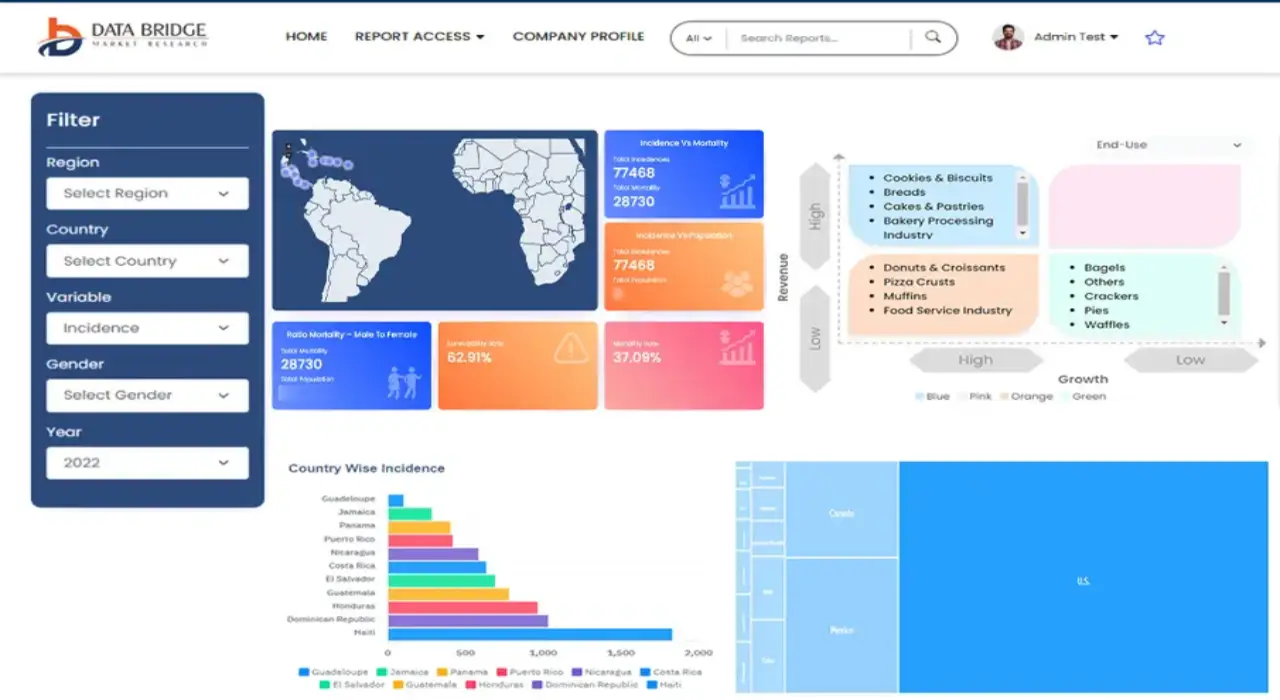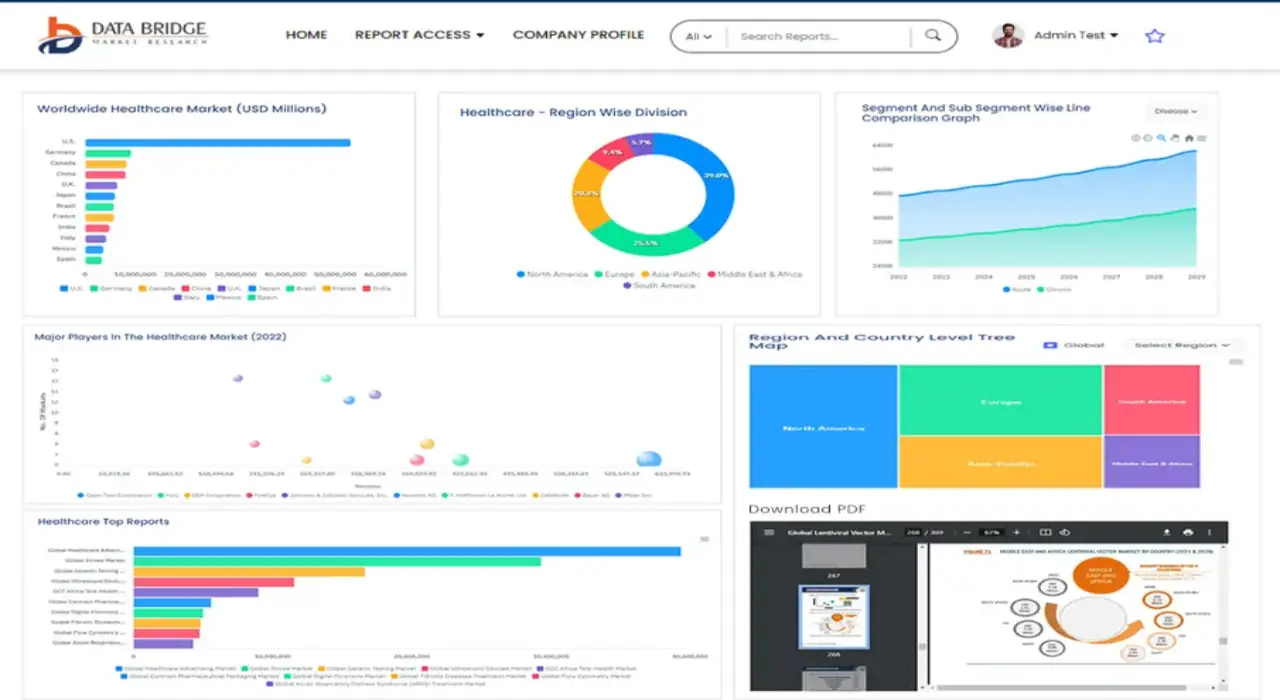Global Hybrid Integration Platform Market, By Integration Type (Application Integration, Data Integration, B2B Integration, Cloud Integration), Service Type (Digital Business Services, Professional Services), Organization Size (Small and Medium-Sized Enterprises, Large Enterprises), End User (Banking, Finance Services, and Insurance, Retail, Government and Public Sector, Manufacturing, Telecommunication, IT, and ITes, Others) Country (U.S., Canada, Mexico, Brazil, Argentina, Rest of South America, Germany, Italy, U.K., France, Spain, Netherlands, Belgium, Switzerland, Turkey, Russia, Rest of Europe, Japan, China, India, South Korea, Australia, Singapore, Malaysia, Thailand, Indonesia, Philippines, Rest of Asia-Pacific, Saudi Arabia, U.A.E, South Africa, Egypt, Israel, Rest of Middle East and Africa) Industry Trends and Forecast to 2028
 Market Analysis and Insights : Global Hybrid Integration Platform Market
Market Analysis and Insights : Global Hybrid Integration Platform Market
The hybrid integration platform market size is valued at USD 69.21 billion by 2028 is expected to grow at a compound annual growth rate of 12.8% in the forecast period of 2021 to 2028. Data Bridge Market Research report on hybrid integration platform provides analysis and insights regarding the various factors expected to be prevalent throughout the forecasted period while providing their impacts on the market’s growth.
Hybrid integration platform helps to provides integration and migration services in various forms such as data integration, application integration, B2B Integration, cloud integration, IoT integration, managed file transfer, big data integration and many others.
The increase in need of integrating on-premises and cloud applications for driving digital business transformation is expected to influence the growth of hybrid integration platform market over the forecast period of 2021 to 2028. Also the high demand for hosting apps, data and services on the cloud is also anticipated to flourish the growth of the hybrid integration platform market. Furthermore, the introduction of “business user”-friendly hybrid integration platform offerings and hybrid integration platforms’ capabilities to undertake the business challenges are also likely to positively impact the growth of the hybrid integration platform market. Moreover, the high demand for hybrid cloud along with favorable government regulations are also expected create a huge demand for hybrid integration platform as well as lifting the growth of the hybrid integration platform market.
However, the high risks in open source integration and interoperability are expected to act as the major limitations for the growth of hybrid integration platform in the above mentioned forecasted period, whereas the rise in usage of ESB technology as an alternative can challenge the hybrid integration platform market growth in the forecast period of 2021 to 2028.
Likewise, the rise in need of interconnecting IoT devices/infrastructure endpoints with enterprise applications to help in making real-time decisions and adaptation of digital open API economy and micro services are expected to create various new opportunities that will lead to the growth of the hybrid integration platform market in the above mentioned forecasted period.
This hybrid integration platform market report provides details of new recent developments, trade regulations, import export analysis, production analysis, value chain optimization, market share, impact of domestic and localized market players, analyses opportunities in terms of emerging revenue pockets, changes in market regulations, strategic market growth analysis, market size, category market growths, application niches and dominance, product approvals, product launches, geographic expansions, technological innovations in the market. To gain more info on the hybrid integration platform market contact Data Bridge Market Research for an Analyst Brief, our team will help you take an informed market decision to achieve market growth.
Global Hybrid Integration Platform Market Scope and Market Size
The hybrid integration platform market is segmented on the basis of integration type, service type, organization size and end user. The growth among segments helps you analyze niche pockets of growth and strategies to approach the market and determine your core application areas and the difference in your target markets.
- On the basis of integration type, the hybrid integration platform market is segmented into application integration, data integration, B2B integration and cloud integration.
- Based on service type, the hybrid integration platform market is segmented into digital business services and professional services. Digital business services have further been segmented into data integration tools, application programming interface management, integration platform as a service, managed file transfer, enterprise service bus, software as a service, endpoint integration and communication gateway services. Communication gateway services have further been sub-segmented into B2B gateway and message-oriented middleware. Professional services have further been segmented into training and consulting and support and maintenance.
- Based on organization size, the hybrid integration platform market is segmented into small and medium-sized enterprises and large enterprises.
The end user segment of the hybrid integration platform market is segmented into banking, finance services, and insurance, retail, government and public sector, manufacturing, telecommunication, IT, and ITes and others.
Hybrid Integration Platform Market Country Level Analysis
The hybrid integration platform market is analyzed and market size, volume information is provided by country, integration type, service type, organization size and end user as referenced above.
The countries covered in the hybrid integration platform market report are U.S., Canada and Mexico in North America, Brazil, Argentina and Rest of South America as part of South America, Germany, Italy, U.K., France, Spain, Netherlands, Belgium, Switzerland, Turkey, Russia, Rest of Europe in Europe, Japan, China, India, South Korea, Australia, Singapore, Malaysia, Thailand, Indonesia, Philippines, Rest of Asia-Pacific (APAC) in the Asia-Pacific (APAC), Saudi Arabia, U.A.E, South Africa, Egypt, Israel, Rest of Middle East and Africa (MEA)as a part of Middle East and Africa (MEA).
North America leads the hybrid integration platform market because of the high demand for integration of cloud based and on premise applications. Asia-Pacific is expected to expand at a significant growth rate of over the forecast period of 2021 to 2028 owing to the high adoption of the cloud services and favorable government regulations.
The country section of the report also provides individual market impacting factors and changes in regulation in the market domestically that impacts the current and future trends of the market. Data points like down-stream and upstream value chain analysis, technical trends and porter's five forces analysis, case studies are some of the pointers used to forecast the market scenario for individual countries. Also, the presence and availability of global brands and their challenges faced due to large or scarce competition from local and domestic brands, impact of domestic tariffs and trade routes are considered while providing forecast analysis of the country data.
Competitive Landscape and Hybrid Integration Platform Market Share Analysis
The hybrid integration platform market competitive landscape provides details by competitor. Details included are company overview, company financials, revenue generated, market potential, investment in research and development, new market initiatives, regional presence, company strengths and weaknesses, product launch, product width and breadth, application dominance. The above data points provided are only related to the companies’ focus related to hybrid integration platform market.
The major players covered in the hybrid integration platform market report are Software AG, Informatica Corporation, Boomi, Inc., Infosys Limited, Dell Inc., MuleSoft, LLC, IBM, TIBCO Software Inc., Oracle, WSO2, SnapLogic, Google, Red Hat, Inc., Axway, RoboMQ, Cleo, and Microsoft, elastic.io GmbH, Wipro Limited and Cognizant among other domestic and global players. Market share data is available for global, North America, Europe, Asia-Pacific (APAC), Middle East and Africa (MEA) and South America separately. DBMR analysts understand competitive strengths and provide competitive analysis for each competitor separately.
SKU-
Get online access to the report on the World's First Market Intelligence Cloud
- Interactive Data Analysis Dashboard
- Company Analysis Dashboard for high growth potential opportunities
- Research Analyst Access for customization & queries
- Competitor Analysis with Interactive dashboard
- Latest News, Updates & Trend analysis
- Harness the Power of Benchmark Analysis for Comprehensive Competitor Tracking
研究方法
数据收集和基准年分析是使用具有大样本量的数据收集模块完成的。该阶段包括通过各种来源和策略获取市场信息或相关数据。它包括提前检查和规划从过去获得的所有数据。它同样包括检查不同信息源中出现的信息不一致。使用市场统计和连贯模型分析和估计市场数据。此外,市场份额分析和关键趋势分析是市场报告中的主要成功因素。要了解更多信息,请请求分析师致电或下拉您的询问。
DBMR 研究团队使用的关键研究方法是数据三角测量,其中包括数据挖掘、数据变量对市场影响的分析和主要(行业专家)验证。数据模型包括供应商定位网格、市场时间线分析、市场概览和指南、公司定位网格、专利分析、定价分析、公司市场份额分析、测量标准、全球与区域和供应商份额分析。要了解有关研究方法的更多信息,请向我们的行业专家咨询。
可定制
Data Bridge Market Research 是高级形成性研究领域的领导者。我们为向现有和新客户提供符合其目标的数据和分析而感到自豪。报告可定制,包括目标品牌的价格趋势分析、了解其他国家的市场(索取国家列表)、临床试验结果数据、文献综述、翻新市场和产品基础分析。目标竞争对手的市场分析可以从基于技术的分析到市场组合策略进行分析。我们可以按照您所需的格式和数据样式添加您需要的任意数量的竞争对手数据。我们的分析师团队还可以为您提供原始 Excel 文件数据透视表(事实手册)中的数据,或者可以帮助您根据报告中的数据集创建演示文稿。













